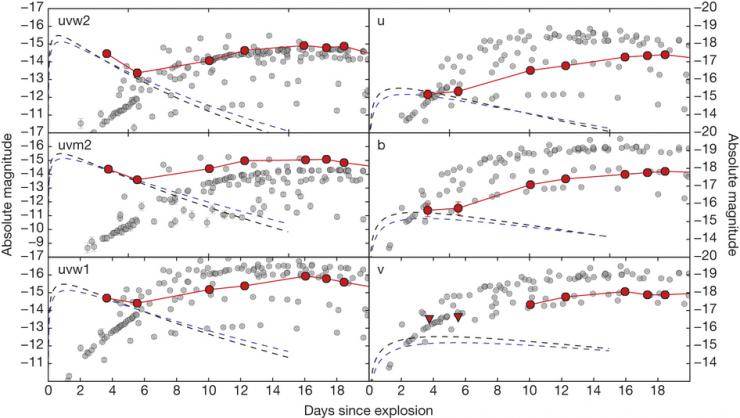A strong ultraviolet pulse from a newborn type Ia supernova
Type Ia supernovae1 are destructive explosions of carbon-oxygen white dwarfs2, 3. Although they are used empirically to measure cosmological distances4, 5, 6, the nature of their progenitors remains mysterious3. One of the leading progenitor models, called the single degenerate channel, hypothesizes that a white dwarf accretes matter from a companion star and the resulting increase in its central pressure and temperature ignites thermonuclear explosion3, 7, 8. Here we report observations with the Swift Space Telescope of strong but declining ultraviolet emission from a type Ia supernova within four days of its explosion. This emission is consistent with theoretical expectations of collision between material ejected by the supernova and a companion star9, and therefore provides evidence that some type Ia supernovae arise from the single degenerate channel.

iPTF14atg lightcurves are shown with red circles and lines and are compared with those of other type Ia supernovae (grey circles). The magnitudes are in the AB system. The 1σ error bars include both statistical and systematic uncertainties in measurements. Lightcurves of other supernovae and their explosion dates are taken from previous studies13, 26. In each of the three ultraviolet bands (uvw2, uvm2 and uvw1), iPTF14atg stands out as exhibiting a decaying flux at early times. The blue and black dashed curves show two theoretical lightcurves derived from companion interaction models9.
[Nature]
Published: April 24, 2015, 3:01 pm

